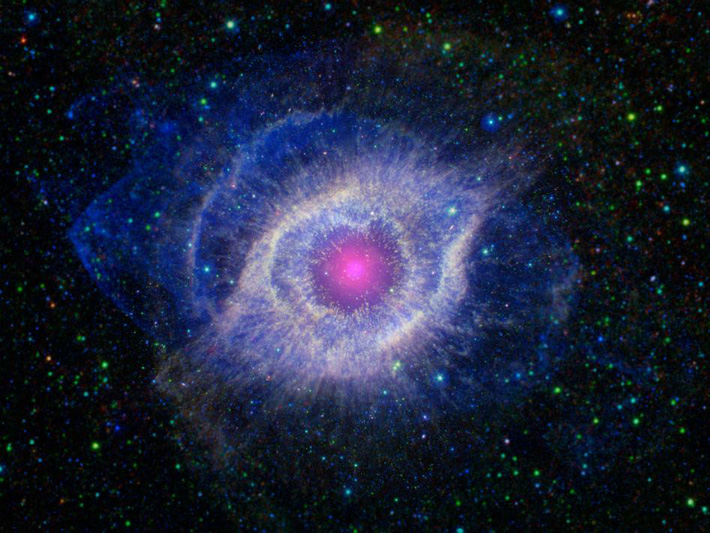Astrophysics

Astrophysics has become a very attractive, transversal and interdisciplinary, research area, with connections with Theoretical Physics, and with High Energy as well as Condensed Matter Physics (e.g. for direct and indirect Dark Matter search and for R&D of new detectors). This has definitely boosted this research field.
In the Physics department, we identify five broad meta-themes, around which orbits a critical mass of researchers, both inside and outside the Astrophysics Group. For each of these meta-themes, we list the “Open questions”, “Recent activities” and “Outlook”.
Space Weather
- Open questions: generation of the solar magnetic field; the sources of solar activity and irradiation variations; the heating of the solar Corona; the impact of solar activity on Earth’s climate; predictions of Space Weather events.
- Recent activities: European Solar Telescope (EST); South Pole Solar Observatory (SPSO); Space Weather; technological activities.
- Outlook: narrow-band spectrometers and subsystems for EST; Space Weather: science and services; Solar Orbiter; SPSO and synoptic telescopes; SONETTO Stratospheric balloons; CubeSat mission CubeSat-6U VENT.
Exoplanets and Habitability
- Open questions: Astrobiology; demographics of exoplanetary Systems; detection of Earth-like planets; probing exoplanet atmospheres; star-planet interactions; climate of terrestrial planets.
- Recent activities: Detection and characterization of transiting exoplanets; Galactic habitability; numerical simulations of exoplanetary atmospheres; projects: HATSouth, CARMENES, GAPS
- Outlook: TESS Space Telescope; the Exo-Earth Discovery and Exploration Network (EDEN); the James Webb Space Telescope (JWST).
Dark Matter
- Open questions: why dwarf Galaxies (dG) are DM dominated? What role dwarfs play in Galaxy formation? Baryonic vs non-baryonic density profiles; merging and Galactic Halo Formation.
- Recent activities: resolved stellar populations in nearby dG; dG Kinematics; chemical enrichment history; baryonic and non-baryonic content.
- Outlook: LSST - comprehensive analysis of nearby stellar populations; ELT MICADO/MAORY - core density profile of nearby galaxies; Astrofisica con Specchi a Tecnologia Replicante Italiana (ASTRI).
The Hot and Energetic Universe
- Open questions: how does ordinary matter assemble into the large-scale structures that we see today; how do black holes grow and shape the Universe?
- Recent activities: Clusters of Galaxies (data analysis and signal processing; cluster collisions, shock heating and gas motions; cluster internal structure and evolution; cluster masses, counts and cosmological probes); active Galaxies and Supermassive Black Holes (multi-scale and multi-phase supermassive black hole winds, and their influence on galaxy evolution; ensemble variability of quasars, the X-ray/UV ratio, and cosmological distances).
- Outlook: cluster detection; baryon cycle in galactic systems; internal structure of clusters; mapping supermassive BH wind, from horizon up to galactic scale.
Cosmology and New Physics
- Open questions: Cosmic Microwave Background (CMB) B-mode polarization; anomalies wrt ΛCDM; the CMB-Cluster abundance discrepancy; tensions among different cosmological observations.
- Recent activities: Tensions (Hubble constant; age of the Universe; beyond ΛCDM: new Dark Energy models); CMB polarization (contribution to the ESA/CORE proposal); foreground separation techniques; inflationary scenarios; cosmology with clusters of galaxies; CMB cosmological results and products of the Planck mission.
- Outlook: Using cosmological observations to test fundamental and new physics; Planck Legacy exploitation; JAXA-LiteBIRD satellite for CMB polarization; LSPE (the balloon-borne LSPE/SWIPE experiment; the ground-based LSPE/STRIP experiment); the EUCLID satellite; non-Gaussianity and inflationary scenarios; Dark Energy vs. modified gravity; neutrino masses and neutrino species N_eff .